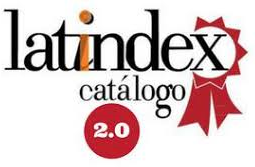Análisis numérico computacional de la estructura de soporte para un tanque de almacenamiento de agua pluvial
DOI:
https://doi.org/10.37135/ns.01.15.04Palabras clave:
Agua pluvial, Análisis numérico, CAD/CAE, Esfuerzo, Estructura de soporteResumen
Esta investigación ha evaluado la viabilidad de un diseño para una estructura de soporte destinada a un tanque de almacenamiento de agua pluvial. Se utilizó software CAD/CAE para llevar a cabo un análisis numérico computacional debido a que estas herramientas permiten predecir comportamientos de elementos sometidos a condiciones específicas, sin necesidad de construcción. La necesidad de este diseño surge de la importancia de desarrollar un sistema integral para la captación de agua de lluvia, como una alternativa sostenible para el suministro de agua. Se estableció una capacidad de almacenamiento de 500 litros, considerando los tanques plásticos disponibles en el mercado local, para determinar las dimensiones y la carga que la estructura debe soportar. El modelado tridimensional se realizó utilizando una tubería cuadrada de acero estructural de 50 mm (2 plg), la cual fue discretizada mediante un mallado. Este proceso se validó alcanzando skewness de 0.2401, con un total de 414 651 elementos y 601 334 nodos, y se definieron las condiciones iniciales y de contorno correspondientes. El esfuerzo de Von Mises obtenido fue de 189.5 MPa, lo cual está por debajo del límite de fluencia para el acero estructural. Además, la deformación en los elementos estructurales no superó los 0.83 mm. El diseño se validó mediante un análisis del factor de seguridad, el cual fue de 1.746, aproximándose al valor recomendado para estructuras de soporte.
Descargas
Referencias
Ahmed, W., Hamilton, K., Gyawali, P., Toze, S. & Haas, C. (2016). Evidence of avian and possum fecal contamination in rainwater tanks as determined by microbial source tracking approaches. Applied and Environmental Microbiology, 82(14), 4379. https://doi.org/10.1128/AEM.00892-16
Arroba-Arroba, C., Telenchana-Flores, M., Paredes-Salinas, J., Fiallo-Ortega, S. & Vaca-Ortega, H. (2021). Ensayos experimentales y análisis numérico de la estructura del material compuesto alternativo para la reparación de superficies de vuelo en aeronaves. Enfoque UTE, 12(2), 37–51. https://doi.org/10.29019/ENFOQUEUTE.723
Bai, L., Gong, C., Chen, X., Sun, Y., Xin, L., Pu, H., Peng, Y. and Luo, J. (2020). Mechanical properties
and energy absorption capabilities of functionally graded lattice structures: experiments
and simulations. International Journal of Mechanical Sciences, 182, 105735. https://doi.org/10.1016/J.IJMECSCI.2020.105735
Chethan, K., Zuber, M., Bhat, S., Shenoy, S. & Kini, C. (2019). Static structural analysis of different stem designs used in total hip arthroplasty using finite element method. Heliyon, 5(6), e01767. https://doi.org/10.1016/J.HELIYON.2019.E01767
Delgado, A., Avila, C. & Ricaurte, M. V. (2024). Sostenibilidad urbana-análisis a escala barrial: Guayaquil. Novasinergia, 7(1), 40–66. https://doi.org/10.37135/NS.01.13.03
Dessales, H. (2020). Construction Techniques for Elevations: Methods and Typology. Dans: Hélène Dessales éd., The Villa of Diomedes: The making of a Roman villa in Pompeii (pp. 189-205). Hermann. https://www.cairn-int.info/the-villa-of-diomedes--9791037003942-page-189.htm?contenu=article
Duan, H. F., Pan, B., Wang, M., Chen, L., Zheng, F. & Zhang, Y. (2020). State-of-the-art review on the transient flow modeling and utilization for urban water supply system (UWSS) management. Journal of Water Supply: Research and Technology-Aqua, 69(8), 858–893. https://doi.org/10.2166/AQUA.2020.048
Erazo-Arteaga, V. (2022). Computer-aided design, manufacturing, and analysis (CAD/CAM/CAE) and other digital manufacturing product development techniques in Latin America. Información Tecnológica, 33(2), 297–308. https://doi.org/10.4067/S0718-07642022000200297
Fu, H., Niu, J., Wu, Z., Cheng, B., Guo, X., & Zuo, J. (2022). Exploration of Public Stereotypes of Supply-and-demand Characteristics of Recycled Water Infrastructure - Evidence from an Event-related Potential Experiment in Xi’an, China. Journal of Environmental Management, 322, 116103. https://doi.org/10.1016/J.JENVMAN.2022.116103
Gadekar, D. & Patel, R. (2022). Design and analysis of under ground water tank considering different fill conditions using STAAD.PRO: A Review. International Journal of Scientific Research in Civil Engineering, 6(1), 11–18. https://ijsrce.com/paper/IJSRCE22612.pdf
Gómez-Monsalve, M., Domínguez, I., Yan, X., Ward, S. & Oviedo-Ocaña, E. (2022). Environmental performance of a hybrid rainwater harvesting and greywater reuse system: a case study on a high-water consumption household in Colombia. Journal of Cleaner Production, 345, 131125. https://doi.org/10.1016/J.JCLEPRO.2022.131125
Krok, J., Leżański, P., Orkisz, J., Przybylski, P. & Schaefer, R. (2023). Basic concepts of an open distributed system for cooperative design and structure analysis. Computer Assisted Methods in Engineering and Science, 3(2), 169–186. https://cames.ippt.pan.pl/index.php/cames/article/view/1456
Li, X., Cao, Q. & Yu, X. (2024). Experimental investigation and theoretical modeling on Bernoulli gripper using water for supply power enhancement. Physics of Fluids, 36(2), 027120. https://doi.org/10.1063/5.0190049
Li, Y., Dziatkovskii, A., Hryneuski, U., Krylova, A. & Dudov, A. (2023). CAD 3D simulation software design based on computer aided design. Computer-Aided Design and Applications, 20(S3), 43–55. https://doi.org/10.14733/cadaps.2023.S3.43-55
Liu, C., AbouRizk, S., Morley, D. & Lei, Z. (2020). Data-driven simulation-based analytics for heavy equipment life-cycle cost. Journal of Construction Engineering and Management, 146(5), 04020038. https://doi.org/10.1061/(ASCE)CO.1943-7862.0001816
MacDonald, D., Gaines, S. & Render, W. (2023). Experimental analysis of rockbolt plate strength through static and dynamic testing. 57th US Rock Mechanics/Geomechanics Symposium, Georgia, USA. https://doi.org/10.56952/ARMA-2023-0013
Martínez-Ramírez, I., Gutiérrez-Rivera, M., Cruz, J., Espinoza-Torres, I. & Hernández-Moreno, S.
(2022). Optimización geométrica de estructuras metálicas ligeras para aplicaciones
prácticas utilizando el método del elemento finito. Ingenio Magno, 13(2), 89–94. http://revistas.ustatunja.edu.co/index.php/ingeniomagno/article/view/2676
Meireles, I., Sousa, V., Bleys, B. & Poncelet, B. (2022). Domestic hot water consumption pattern: relation with total water consumption and air temperature. Renewable and Sustainable Energy Reviews, 157, 112035. https://doi.org/10.1016/J.RSER.2021.112035
Nazemosadat, S., Ghanbarian, D., Naderi-Boldaji, M. & Nematollahi, M. (2022). Structural analysis of a mounted moldboard plow using the finite element simulation method. Spanish Journal of Agricultural Research, 20(2), e0204. https://doi.org/10.5424/SJAR/2022202-18157
Portioli, F. (2020). Rigid block modelling of historic masonry structures using mathematical programming: a unified formulation for non-linear time history, static pushover and limit equilibrium analysis. Bulletin of Earthquake Engineering, 18, 211–239. https://doi.org/10.1007/s10518-019-00722-0.
Razo-Carrasco, D. & García-Domínguez, O. (2020). Evaluación integral de la seguridad estructural de edificaciones existentes dañadas por sismos de gran magnitud. Revista de Ingeniería Sísmica, 104, 51–71. https://doi.org/10.18867/RIS.104.565
Shruti, M., Hemanth, N., Badgayan, N. & Sahu, S. (2021). Compressive behavior of auxetic structural metamaterial for lightweight construction using ANSYS static structural analysis. Materials Today: Proceedings, 38, 12–17. https://doi.org/10.1016/J.MATPR.2020.05.410
Simbaña, I., Quitiaquez, W., Cabezas, P. & Quitiaquez, P. (2024). Estudio comparativo de la eficiencia de colectores solares de placa plana rectangular y triangular mediante el método de elementos finitos. Revista Técnica “energía,” 20(2), 81–89. https://doi.org/10.37116/revistaenergia.v20.n2.2024.593
Sultana, R. (2022). Optimum tank size for large rainwater harvesting system. AWWA Water Science, 4(2), e1277. https://doi.org/10.1002/AWS2.1277
Tzotzis, A., García-Hernández, C., Huertas-Talón, J. L. & Kyratsis, P. (2020). Influence of the nose radius on the machining forces induced during AISI-4140 hard turning: a CAD-based and 3D FEM approach. Micromachines, 11(9), 798. https://doi.org/10.3390/MI11090798
Verma, A., Shankar, R., Malik Shaik, A., Veera-Siva, B., Chandrasekhara-Sastry, C., Shaik, N., Salunkhe, S., Cep, R. & Abouel-Nasr, E. (2024). Comprehensive design and analysis of a 300L steel fuel tank for heavy off-road vehicles: numerical and experimental insights. Frontiers in Mechanical Engineering, 10, 1360590. https://doi.org/10.3389/fmech.2024.1360590






